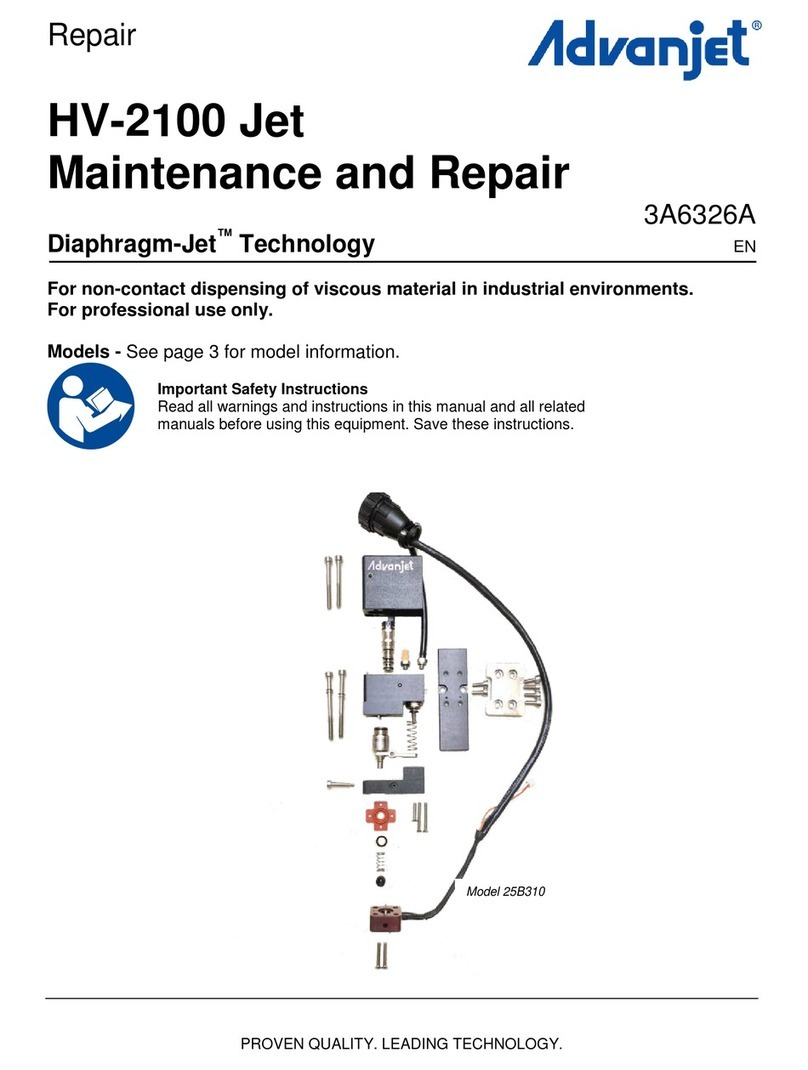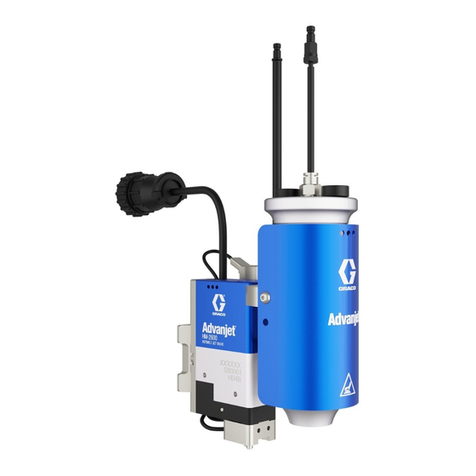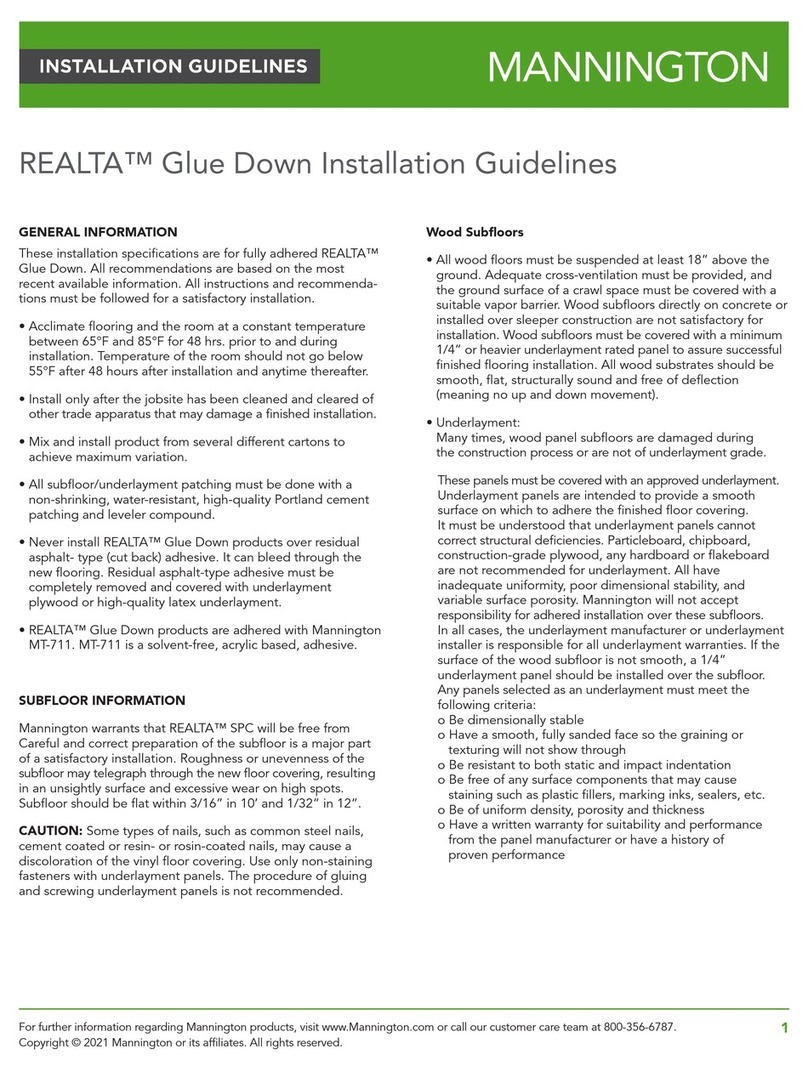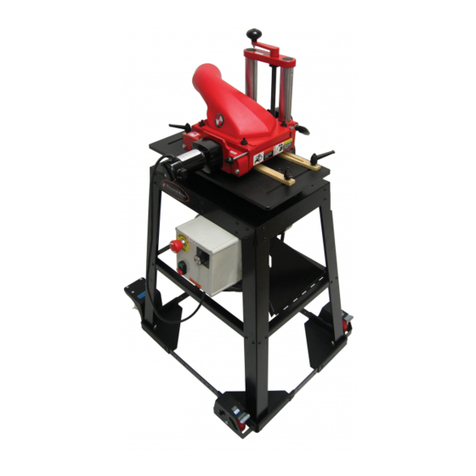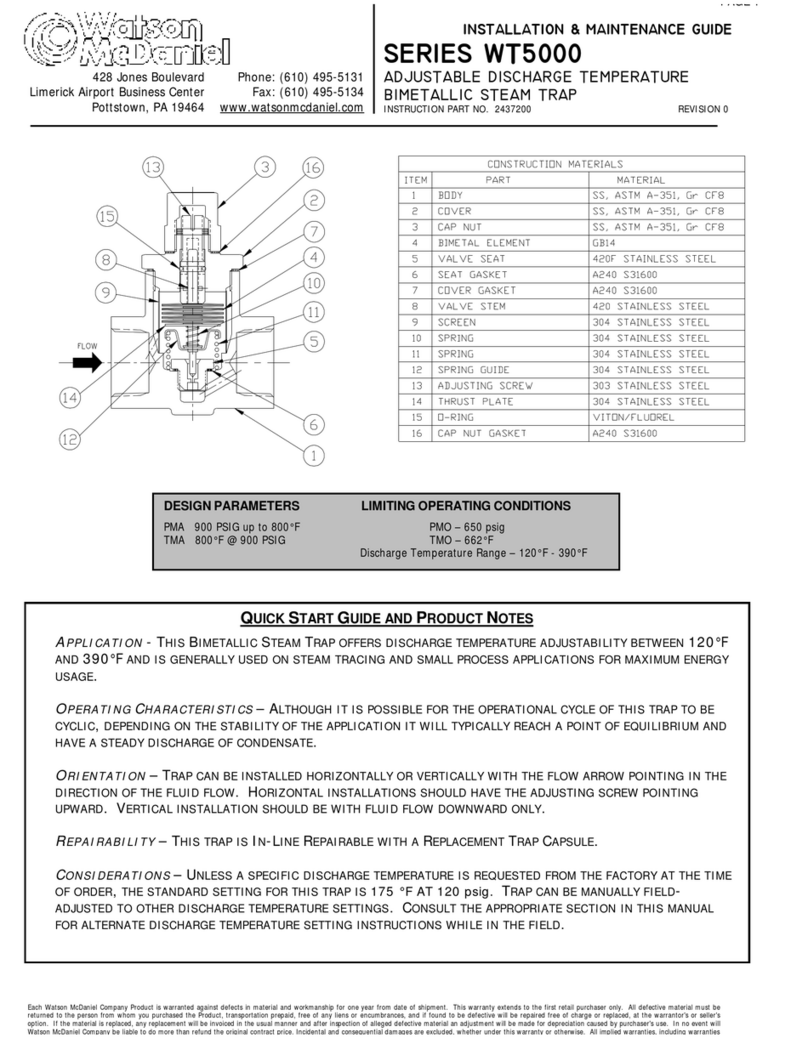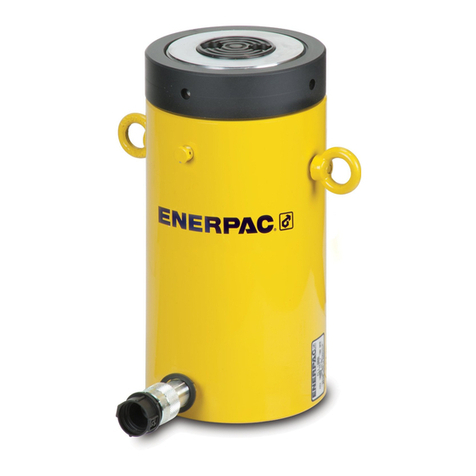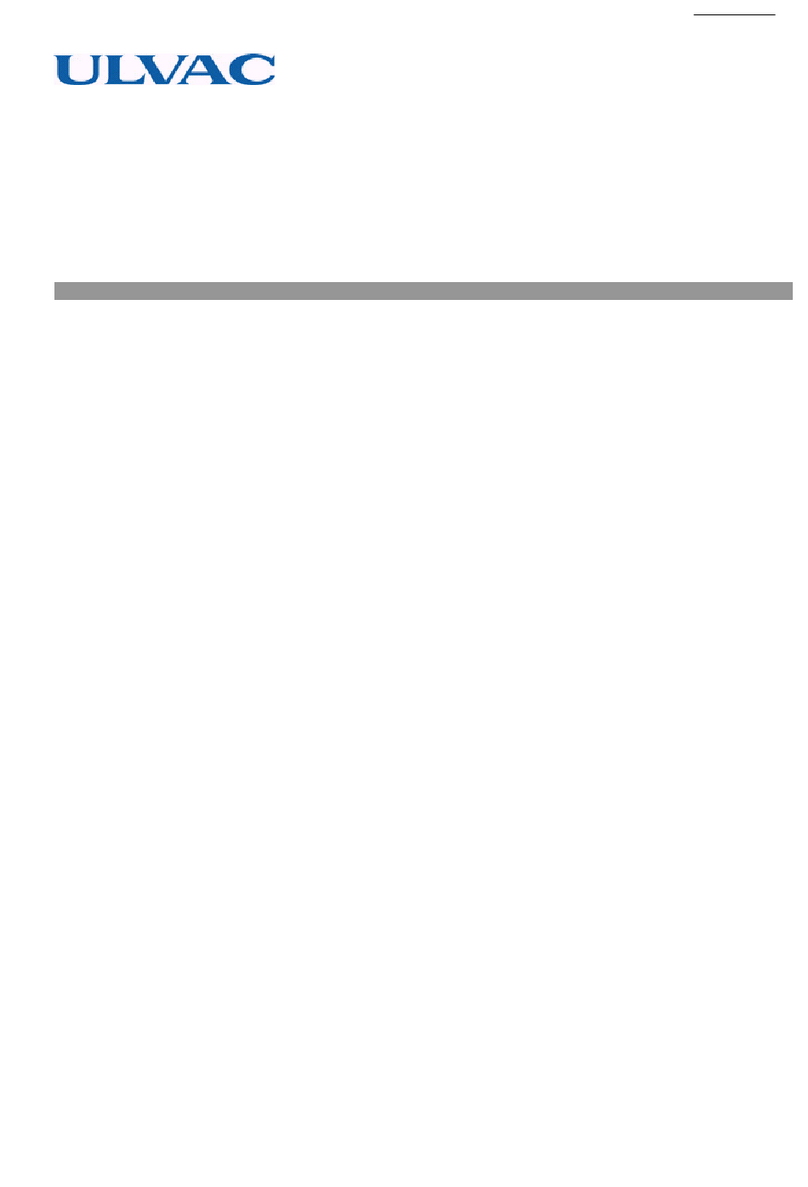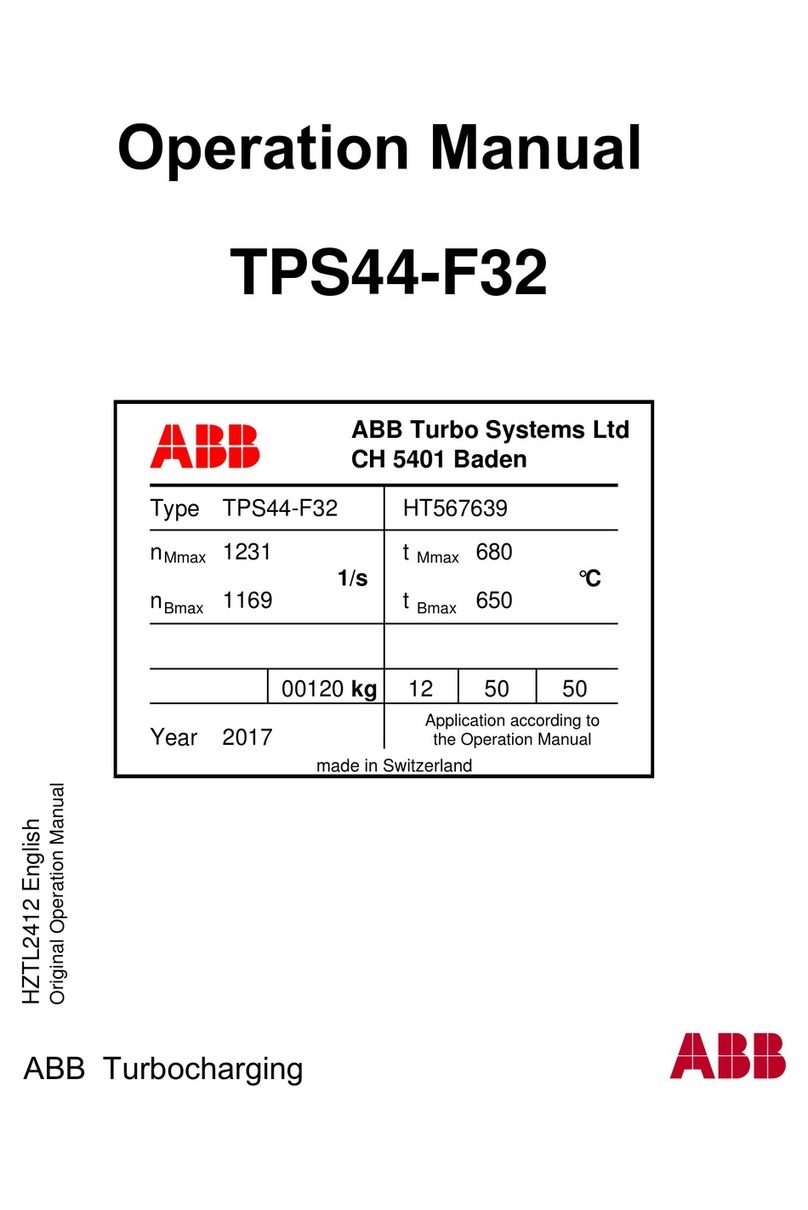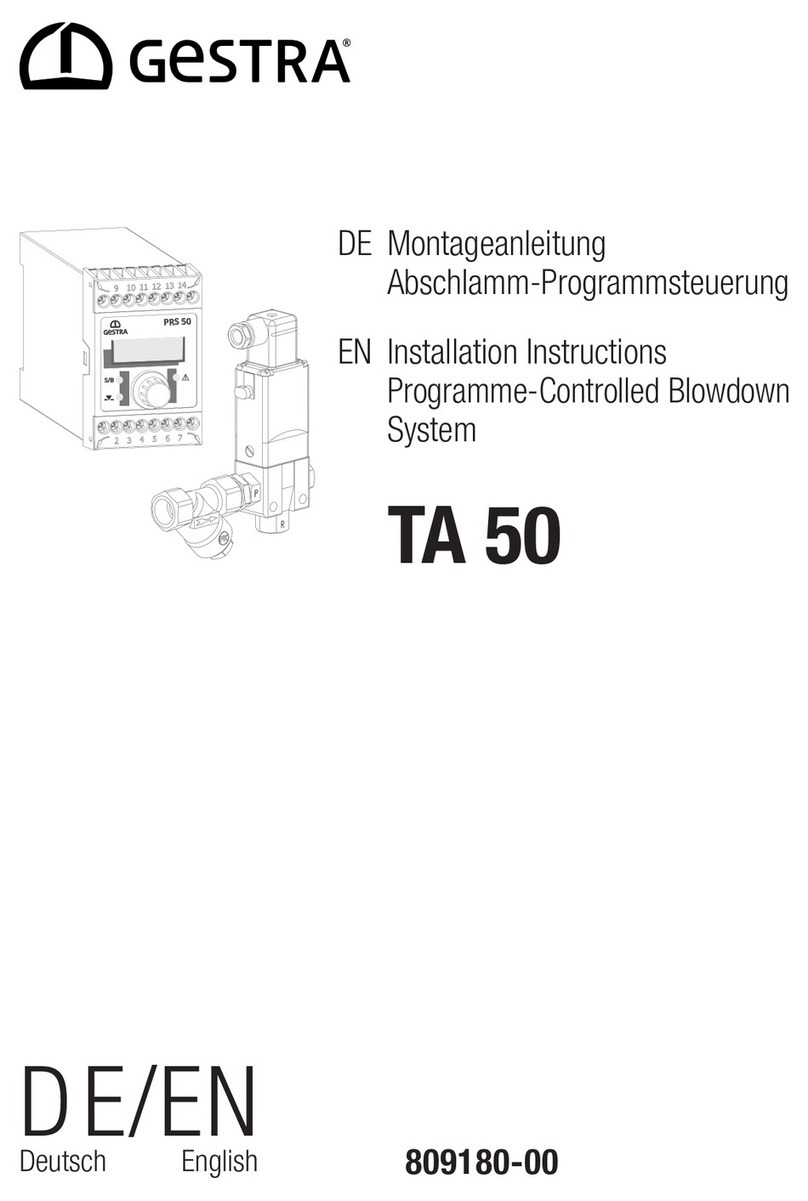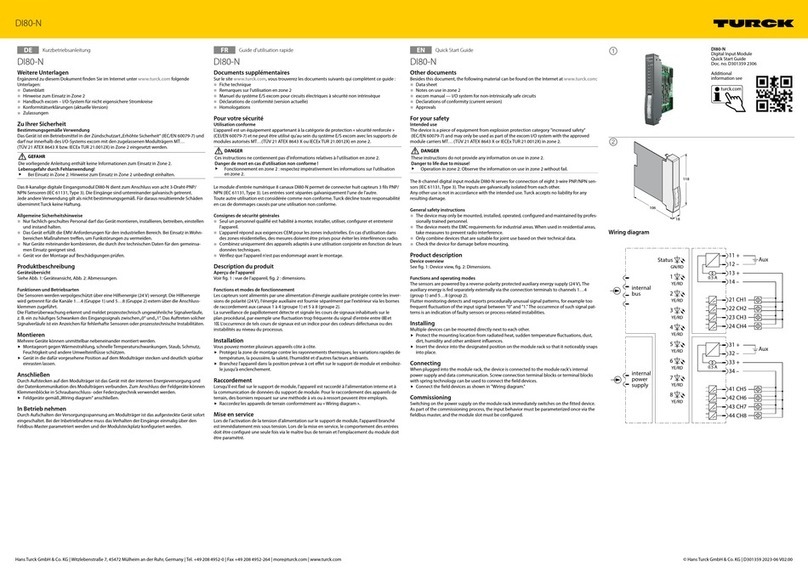Advanjet HV-2100 Jet Manual instruction

Setup and Operation
HV-2100 Jet
3A6244A
Diaphragm-Jet™Technology EN
For non-contact dispensing of viscous material in industrial environments.
For professional use only.
Models - See page 3 for model information.
Important Safety Instructions
Read all warnings and instructions in this manual and all related
manuals before using this equipment. Save these instructions.
Model 25B310
PROVEN QUALITY. LEADING TECHNOLOGY.

Table of Contents
Models............................................................................................................................ 3
Related Manuals............................................................................................................ 3
Warnings........................................................................................................................ 4
1. Specifications..................................................................................................... 5
1.1 Technical Specifications ............................................................................5
1.2 Technical Assistance.................................................................................5
1.3 HV-2100 Jet Dimensions........................................................................... 6
2. Installation and Setup ........................................................................................ 7
2.1 Dispensing Components............................................................................ 7
2.2 Pneumatic Connections.............................................................................8
2.3 Cable Connections ....................................................................................9
2.4 Jet Cable Input/Output............................................................................. 10
3. Assembling the HV-2100 Jet............................................................................ 11
3.1 Jet Assembly Overview............................................................................ 11
3.2 Inspect the Nozzle Plate for Cleanliness.................................................. 12
3.3 Install the Nozzle Insert............................................................................13
3.4 Install the Diaphragm and Nozzle Plate...................................................14
3.5 Install the Feed Tube and Fluid Syringe ..................................................15
3.6 Prime the Jet............................................................................................ 16
3.7 Check for Fluid Leaks.............................................................................. 17
4. Cleaning the Jet................................................................................................ 18
4.1 Cleaning the Exterior of the Jet................................................................ 18
4.2 Cleaning the Interior of the Jet................................................................. 18
4.3Solvent and Diaphragm Compatibility......................................................19
4.4 Flush the Fluid System............................................................................ 20
4.5 Clean the Nozzle ..................................................................................... 21
Graco Standard Warranty........................................................................................... 22
Page 2 of 22 Advanjet HV-2100 Jet Setup and Operation 3A6244A

Models
Part Number
Model
25B310
HV-2100 Jet, 30 cc syringe
25B311
HV-2100 Jet, 30 cc syringe, heated feed tube
25B312
HV-2100 Jet, 6 oz syringe, heated feed tube
Related Manuals
Manuals are available at www.graco.com. Component manuals below are in English:
Part Number
Manual
3A6226
HV-2100C Jet Controller Setup and Operation
3A6326
HV-2100 Jet Maintenance and Repair
3A5937
Jet Dispensing Parameters Supplement
3A5908
Jet Maintenance Tool Kits
3A6244A Advanjet HV-2100 Jet Setup and Operation Page 3 of 22

Warnings
The following warnings are for the setup, use, grounding, maintenance, and repair of
this equipment. The exclamation point symbol alerts you to a general warning and the
hazard symbols refer to procedure-specific risks. When these symbols appear in the
body of this manual or on warning labels, refer back to these Warnings. Product-specific
hazard symbols and warnings not covered in this section may appear throughout the
body of this manual where applicable.
WARNING
ELECTRIC SHOCK HAZARD
This equipment must be grounded..Improper grounding, setup, or usage of the system can cause
electric shock.
Turn off and disconnect power cord before servicing equipment.
Connect only to grounded electrical outlets.
Use only 3-wire extension cords.
Ensure ground prongs are intact on power and extension cords.
TOXIC FLUID OR FUMES HAZARD
Toxic fluids or fumes can cause serious injury or death if splashed in the eyes or on skin, inhaled, or
swallowed.
Read Safety Data Sheets (SDSs) to know the specific hazards of the fluids you are using.
Store hazardous fluid in approved containers and dispose of it according to applicable guidelines.
BURN HAZARD
Equipment surfaces and fluid that is heated can become very hot during operation. To avoid severe
burns: Do not touch hot fluid or equipment.
PERSONAL PROTECTIVE EQUIPMENT
Wear appropriate protective equipment when in the work area to help prevent serious injury,
including eye injury, hearing loss, inhalation of toxic fumes, and burns. Protective equipment includes
but is not limited to:
Protective eyewear, and hearing protection.
Respirators, protective clothing, and gloves as recommended by the fluid and solvent
manufacturer.
EQUIPMENT MISUSE HAZARD
Misuse can cause death or serious injury.
Do not operate the unit when fatigued or under the influence of drugs or alcohol.
Do not exceed the maximum working pressure or temperature rating of the lowest rated system
component. See Technical Specifications in all equipment manuals.
Use fluids and solvents that are compatible with equipment wetted parts. See Technical
Specifications in all equipment manuals. Read fluid and solvent manufacturer’s warnings. For
complete information about your material, request Safety Data Sheets (SDSs) from distributor or
retailer.
Check equipment daily. Repair or replace worn or damaged parts immediately with genuine
manufacturer’s replacement parts only.
Do not alter or modify equipment. Alterations or modifications may void agency approvals and
create safety hazards.
Make sure all equipment is rated and approved for the environment in which it is used.
Use equipment only for its intended purpose. Contact your distributor for information.
Route hoses and cables away from traffic areas, sharp edges, moving parts, and hot surfaces.
Do not kink or over bend hoses or use hoses to pull equipment.
Keep children and animals away from work area.
Comply with all applicable safety regulations.
Page 4 of 22 Advanjet HV-2100 Jet Setup and Operation 3A6244A

1. Specifications
1.1 Technical Specifications
Size
(including mounting bracket)
Width: 25.4 mm (1.00 in)
Height: 116.1 mm (4.57 in)
Depth: 106.8 mm (4.20 in)
Weight:446 grams (0.98 lb)
Viscosity Range
1-400K mPa•s (cPs)
Speed
Up to 300 drops/sec
Fluid Syringes
5, 10, 30 and 55 cc
Nozzle Features
Tungsten Carbide and long-life ceramic
Sizes from 50 µm to 600 µm
Extended tips available from 3 mm to 6 mm
Wetted Parts
17-4 Stainless Steel, Tungsten Carbide,
Ceramic, FKM, FFKM, Silicone
Nozzle Heater
Heating up to 70 °C max (158 °F)
Fluid Pressure
0.41 MPa (60 psi) max
Jet Pressure
0.24 MPa (35 psi) min
0.62 MPa (90 psi) max
Operating Temperature
15 °C to 50 °C (59 °F to 122 °F)
Operating Noise
Sound pressure measured 1.5 m
(4.9 ft) from applicator at 40 psi
(225 kPa), per EN ISO 3746
79.4 dB(A)
1.2 Technical Assistance
For customer service and technical assistance:
Advanjet
926 Andreasen Dr. # 108
Escondido, CA 92029
USA
Phone: +1 800 333 4877
Web: www.advanjet.com
E-mail: info@advanjet.com
3A6244A Advanjet HV-2100 Jet Setup and Operation Page 5 of 22

1.3 HV-2100 Jet Dimensions
Shown below are the mechanical dimensions of the HV-2100. Units are in millimeters
[inches].
The HV-2100 can be mounted to a variety of robots when X-Y-Z motion is desired.
It can also be mounted rigidly over a transporting mechanism like a conveyor belt or
shuttle table.
The HV-2100 provides a dovetail rear mounting plate for rigid attachment to a
robot’s XYZ stage. An optional mating dovetail mount is available from Advanjet
(P/N 03-2312).
The dispense tip relative to the mounting holes and the rear mounting plate
dimensions are shown in mm in the figure below. It is highly recommended that any
mounting scheme allow for vertical adjustment so the dispensing tip to dispensing
surface can be easily adjusted.
116.1
[4.57]
105.1
[4.14]
28.9 [1.14]
106.8
[4.20]
25.4 [1.00]
38.1
[1.5]
44.5
[1.75]
52.8 [2.08]
Page 6 of 22 Advanjet HV-2100 Jet Setup and Operation 3A6244A

2. Installation and Setup
2.1 Dispensing Components
The HV-2100 has three essential components that contact the fluid: the nozzle plate,
the diaphragm, and the feed tube. The feed tube is disposable; the other components
can be disassembled, cleaned and reused. Cleaning procedures are in Section 4 -
Cleaning the Jet.
The diaphragm should be inspected each time the nozzle plate is removed. If there are
signs of wear, cracks, or deformation, the diaphragm should be replaced. Consideration
should be made of dispensing and cleaning fluids that could damage the jet’s wetted
parts. The materials of these components are listed in Section 1.1 - Technical
Specifications. In particular, cyanoacrylates or pre-mixed two-part adhesives with a
short pot life are not recommended, as these materials can harden in the nozzle plate.
See Section 4.3 - Solvent and Diaphragm Compatibility for details.
Figure 2-1: HV-2100 Jet Dispensing Components
DIAPHRAGM
NOZZLE PLATE &
O-RING
FEED TUBE
3A6244A Advanjet HV-2100 Jet Setup and Operation Page 7 of 22

2.2 Pneumatic Connections
Main Air Supply: Connect a filtered (40-micron filter or better) and independently
regulated main air source. It is highly recommended to place a drying system or
desiccant dryer in line with the main air line. A 6mm OD air tube with a slip connect
coupler is supplied to connect the HV-2100C to the main air supply. The main air supply
pressure should be between 70 and 100 psi (0.48 and 0.70 MPa).
Fluid Syringe Air Pressure:The HV-2100C delivers fluid syringe air pressure through
clear 4 mm OD tubing that is attached to the receiver head and has a twist-lock
connector to the controller. The fluid syringe air supply should be at maximum 60 psi
(0.41 MPa); normal fluid pressure is usually between 10 and 50 psi (0.06 and 0.34 MPa).
Variations in the air pressure source can adversely affect the consistency of the drop
size.
Jet Air Pressure:The HV-2100C delivers jet air pressure through black 6 mm OD
tubing with a quick-connect coupler to the controller and an air fitting for the jet. The jet
air supply must be clean and dry and at a maximum pressure of 75 psi (0.51 MPa);
normal jet air operation is usually between 35 and 75 psi (0.24 and 0.51 MPa).
NOTICE
It is imperative that the air supplied to the HV-2100 is clean, dry, and free from debris and water. A 40-micron filter
is highly recommended. If the air is not clean and dry, serious damage can occur to the air solenoid valves.
Figure 2-2: HV-2100 Pneumatic Connections
Page 8 of 22 Advanjet HV-2100 Jet Setup and Operation 3A6244A

2.3 Cable Connections
The cable connections for a typical dispensing system are illustrated below. To assure
proper connections, each of the component cables supplied by Advanjet has a distinct
connector. Be sure that all power is off when connecting and disconnecting any cable to
the Advanjet controller.
Jet:A 28-pin cable (P/N 06-1095-00) mates with the HV-2100 jet cable to connect it to
the HV-2100C controller. Section 2.4 provides HV-2100 Jet Cable pin assignments.
I/O:When using the HV-2100 jet with the HV-2100C controller and a robot, six TTL
trigger lines control jet operations through a 26-pin cable (P/N CB26-005).
COMM:A PC can be connected to the controller via RS-232C/USB to operate the
HV-2100 using software instead of the front panel touch screen.
Figure 2-3: Cable Connections for the HV-2100 in a Typical Dispensing System
3A6244A Advanjet HV-2100 Jet Setup and Operation Page 9 of 22

2.4 Jet Cable Input/Output
A 28-pin cable is supplied with the HV-2100 Jet. The table lists the jet cable pin
assignments.
JET CABLE
PIN ASSIGNMENTS
PIN
1
--
2-3
Jet Solenoid
4-5
Jet Heater
6-7
Jet RTD
8-28
--
Figure 2-4: CPC-28 Jet Cable
Page 10 of 22 Advanjet HV-2100 Jet Setup and Operation 3A6244A

3. Assembling the HV-2100 Jet
The HV-2100 jet is shipped fully assembled except for the diaphragm and nozzle plate.
A specific diaphragm material and nozzle plate orifice diameter should be chosen based
on the application and dispensing fluid. The steps required to correctly assemble the
diaphragm and nozzle plate on the jet body are detailed below.
Before assembling the jet, make the necessary pneumatic and electrical connections as
described in Sections 2.2 and 2.3.
3.1 Jet Assembly Overview
Figure 3-1 below shows the alignment of the heater block, diaphragm, O-ring, and
nozzle plate.
There is a grooved pattern on the bottom face of the heater block that matches
the raised embossments on the diaphragm. The grooves position the diaphragm
correctly on the heater block.
The diaphragm also has a metal insert with a post that must be inserted into the
central hole on the heater block.
Although a diaphragm can be inserted without the jet connected to an air source,
it will not sit flat on the heater. It is recommended to OPEN the jet before
assembling the diaphragm. Detailed instructions are in Section 3.4 - Install the
Diaphragm and Nozzle Plate.
Figure 3-1: HV-2100 Heater Block, Diaphragm, O-Ring and Nozzle Plate
HEATER BLOCK
DIAPHRAGM
O-RING
NOZZLE PLATE
3A6244A Advanjet HV-2100 Jet Setup and Operation Page 11 of 22

3.2 Inspect the Nozzle Plate for Cleanliness
It is important to inspect the jet nozzle plate for debris before mounting it onto the Jet.
A clean nozzle looks like this:
If the nozzle plate is not clean, it could affect the dispensing quality. These dispensing
problems are symptoms of a contaminated jet:
Unclean or uneven dispensing
Drops become irregular or vary in size
Residual flow or drooling out of the tip when the jet is in the closed position
Interrupted dispensing (places where fluid no longer is dispensed)
Splatter or satellites
For best results, Advanjet cleaning kits contain tools appropriately sized to the nozzle
plate. For example, if you are using the 125 μm nozzle plate, order the 125 μm cleaning
kit (Advanjet P/N CL-125).
Refer to Section 4 for complete instructions on cleaning the jet.
NOTICE
Never submerge the diaphragm in solvents as it might result in damage.
Diaphragms can be cleaned successfully with
a small amount of solvent and a soft brush and cotton swab.
Do not submerge the diaphragm into the ultrasonic cleaner because
it will deteriorate the diaphragm and shorten its life.
Figure 3-2: A Clean Nozzle
Page 12 of 22 Advanjet HV-2100 Jet Setup and Operation 3A6244A

3.3 Install the Nozzle Insert
When the nozzle becomes damaged or plugged, a new nozzle insert and O-ring may be
required. Installation is simple, but correct and careful assembly is important.
NOZZLE INSERT O-RING PART NUMBER
NOZZLE PLATE O-RING PART NUMBER
SILICONE
FKM
SILICONE
FKM
NP09-2830
NP09-2851
NP09-2820
NP09-2850
Disassemble the nozzle plate by1. removing the three screws from
the nozzle plate bottom.
Flip over and remove the nozzle2. plate top and the nozzle insert.
Save the O-ring.
Clean as needed.3.
Set the nozzle insert with the4.
O-ring facing up in the groove of
bottom plate as shown below.
Replace the nozzle plate top.5.
Holding the top and bottom plates
together, flip the nozzle over.
Replace the three screws.
Flip the nozzle top side up and set the nozzle plate O-ring6.
in the groove.
Note: When installing the nozzle, the O-ring must face up.
NOZZLE INSERT
O-RING
NOZZLE PLATE
O-RING
Figure 3-3: Nozzle Insert O-Ring (left) Compared to Nozzle Plate O-ring (right)
3A6244A Advanjet HV-2100 Jet Setup and Operation Page 13 of 22

3.4 Install the Diaphragm and Nozzle Plate
Material inside the applicator can be near setpoint temperature.
To avoid severe burns, wear protective gloves.
1. Turn the main power ON.
2. Set the jet pressure to 40 psi (.28 MPa).
3. On the Advanjet controller home screen, tap Jet to OPEN the jet.
4. Note the
rectangular
grooves on the
heater block that
align with the
grooves on the
diaphragm.
5. Gently press the
diaphragm into the
heater block until the
diaphragm pin is
inserted in the center
and the rectangular
grooves are firmly in
place.
6. Note that the
heater block has
two pins that align
with two holes in
the nozzle plate.
7. Use the pins to align the
nozzle plate
on the heater
block. The nozzle plate O-
ring faces up, and the fluid
barb faces the fluid syringe.
8. Tighten the two
embedded screws
with a 3-mm hex
driver. Do not over-
tighten; it is possible
to strip the screws.
An optional torque
wrench is available
for this purpose (P/N
NT09-2500).
9. Before installing the fluid syringe, CLOSE the jet.
ALIGN
THE
G
ROOVES
ALIGN PINS TO HOLES
NOZZLE
PLATE
O-RING
FACES UP
FLUID BARB
FACES
SYRINGE
Page 14 of 22 Advanjet HV-2100 Jet Setup and Operation 3A6244A

3.5 Install the Feed Tube and Fluid Syringe
Material inside the applicator can be near setpoint temperature.
To avoid severe burns, wear protective gloves.
1. If the syringe is smaller than 30 cc,
insert a syringe spacer ring.
Adapters are available in 3-cc, 5-cc,
and 10-cc.
2. Check the receiver head O-ring for
wear, debris, or
deformity. These
conditions could cause fluid to leak.
Clean or replace if necessary.
3. Turn Fluid Air OFF.
Insert the receiver head into the
syringe and twist to lock.
4. Attach a new feed tube to the luer
(metal luer shown; selection of feed
tube material depends on the
dispensing fluid.
5. Attach the feed tube to the syringe
and place the syringe in the jet.
Tighten the thumbscrew to secure.
6. Slip the feed tube onto the barb end
of the nozzle plate.
CLEAN O-RING
SPACER
RING
THUMB
SCREW
NOZZLE PLATE BARB
3A6244A Advanjet HV-2100 Jet Setup and Operation Page 15 of 22

3.6 Prime the Jet
Note: HV-2100C Controller shown for illustrative purposes.
1. Prior to dispensing, it is necessary to prime the jet in order to purge residual air
from the system. In order to do this, the fluid must be brought to dispensing
temperature.
From the HV-2100C front panel, use the following procedure to turn on the
heater.
Press (INDEX) until Run-Stop (r-S)
is displayed on the Present Value (PV)
line.
Use the
arrows to select the rUn
setting on the Set Value (SV) line.
Press (ENTER) to save the change.
Heater is ON.
Press again to return to the main screen
Use the
arrows to change Set Value (SV) to the dispensing temperature for
the fluid being used.
Wait ten minutes for the temperature of the nozzle to be stable.
2. Position a purge cup under the jet nozzle.
3. Turn the Fluid Air OFF (“O” on Air switch).
4. On the controller touch panel:
Tap on Fluid Pressure and set to 0.
Tap on Jet to OPEN.
5. Turn the Fluid Air ON (“I” on Air switch).
6. Keep the purge cup positioned under the
nozzle. While watching for fluid flow from the
nozzle, increase Fluid Pressure in small
increments.
Once fluid begins to slowly flow, continue at that pressure until there are no
bubbles in the fluid.
7. Tap on Jet to CLOSE.
8. Tap on Jet Pressure and set to 45 psi.
9. It is useful to designate a recipe on the HV-2100C controller for the priming
process. Use these parameters:
Refill = 10.0 ms
Dwell = 10.0 ms
Refill+ = 0.3 ms
Drops = 250
This recipe allows most fluids to flow through the jet easily.
Figure 3-4: Turn the Heater ON
Figure 3-5: Fluid Pressure 0, Jet OPEN
Page 16 of 22 Advanjet HV-2100 Jet Setup and Operation 3A6244A

3.6 Prime the Jet, continued
10. Remove the purge cup and place a glass slide or piece
of substrate under the nozzle.
Press the Trigger button to run the recipe once.
Observe the quality of the drops.
Repeat this several times to ensure adequate priming.
11. Wipe the nozzle tip of any accumulation. The jet is ready
to operate with the appropriate recipe settings for dispensing.
3.7 Check for Fluid Leaks
Before running a program, it is important to check for fluid leaks. Fluid should not drip
through the orifice. If fluid is leaking through the nozzle tip when the jet valve is closed,
check to see if the jet pressure is set to at least 35 psi (0.24 MPa). Increase the
pressure to 60 psi (0.42 MPa) and check to see if
the leak stops.
There are several areas to check for fluid leaks:
Check to see if fluid leaks out of the weep
hole in the heater block shown in
Figure 3-7. If fluid is leaking, the
diaphragm is either missing or damaged
and should be replaced. The heater block
will need to be removed and the leaking
fluid should be cleaned.
Fluid can leak out of the Luer fitting that attaches the syringe to the feed tube.
Sometimes the Luer fitting is a little snug and hard to twist in completely. If fluid is
leaking, give the fitting an extra turn to seat it completely. If this does not solve
the leaking, change the feed tube and/or the syringe and check again.
Fluid can leak at the junction between the feed tube and the nozzle plate inlet
fitting. The feed tube is connected using a standard barb to the inlet fitting. If fluid
is leaking at the barb end of the fitting, replace the feed tube.
Check for leaks between the diaphragm and the nozzle plate. The nozzle plate
must be attached correctly with screws well tightened. Make sure the Jet valve is
closed. If fluid can be seen leaking under the diaphragm, then the Jet has not
been assembled correctly. Disassemble the dispensing components and inspect,
clean, and/or replace the diaphragm as required. If the leak continues, the
diaphragm or nozzle plate is most likely damaged or dirty, and it should be
cleaned or replaced.
If fluid leaks between the diaphragm and the nozzle plate, the jet will not function
correctly. Dispensing should be discontinued, and the components should be cleaned or
replaced as required.
Figure 3-7: Check for Leaks at Weep Hole
Figure 3-6: Trigger Button
3A6244A Advanjet HV-2100 Jet Setup and Operation Page 17 of 22

4. Cleaning the Jet
4.1 Cleaning the Exterior of the Jet
To clean the exterior of the jet, use a soft cotton or cellulose cloth. If the jet exterior is
extremely dirty, a small amount of alcohol can be used.
To avoid personal injury, move the nozzle
close to the paper so there is minimal
misting of the solvent during flushing. Be
sure there is proper ventilation and wear
appropriate eye and skin protection as
instructed by the solvent manufacturer.
NOTICE
To prevent damage to the jet:
Do not use a dripping wet cloth or pour solvents, alcohol, water, or
other liquids directly on the jet.
Do not submerge the jet in the cleaning agent.
4.2 Cleaning the Interior of the Jet
The Advanjet HV-2100 is a high precision jet for dispensing minute amounts of fluid.
Dispensing nozzles can become blocked or clogged by the smallest contaminates,
which will adversely affect dispensing results.
These are symptoms of a contaminated jet:
Unclean or uneven dispensing
Drops become irregular or vary in size
Residual flow or drooling out of the tip when the jet is in the closed position
Interrupted dispensing (places where fluid no longer is dispensed)
Splatter or satellites
The importance of clean jetting is a key design element of the HV-2100, resulting in a jet
that is quick and easy to clean. Following these simple cleaning steps will optimize
jetting quality and maximize productivity.
Page 18 of 22 Advanjet HV-2100 Jet Setup and Operation 3A6244A

4.3 Solvent and Diaphragm Compatibility
Advanjet uses four different diaphragm materials: FKM (fluoroelastomers), silicone,
FFKM (perfluoroelastomers), and EPDM (ethylene propylene diene terpolymer). In
general, if the diaphragm material is incompatible with a solvent, the diaphragm will
exhibit slight swelling around the metal insert. If swelling occurs, the performance of the
jet will be adversely affected.
Use this table as a guide for selecting an appropriate cleaning solvent.
FKM
Silicone
FFKM
EPDM
Chemical
Acetone
✗
✗
✔
✔
Ethanol
✗
✔
✔
✔
Isopropanol
✔
✔
✔
✔
Methyl Ethyl Ketone
✗
✗
✔
✔
Toluene
✔
✗
✔
✗
Xylene
✔
✗
✔
✗
✔= Compatible;✗= DO NOT USE
3A6244A Advanjet HV-2100 Jet Setup and Operation Page 19 of 22

4.4 Flush the Fluid System
1. Turn the fluid air OFF.
Note: It is important to first turn off the air before cleaning the jet. If the feed tube
is dismounted under pressure, the fluid from the syringe will make a mess.
2. Remove the receiver head.
3. Remove the feed tube from the nozzle plate.
4. Remove the syringe from the jet.
5. Install an empty syringe with a feed tube onto the fluid barb of the nozzle plate.
6. Fill the syringe with about 3 cc of mild solvent compatible with your fluid material.
7. Replace the receiver head onto the syringe.
8. Set up a test recipe using the following parameters:
10.0 msec Refill
10.0 msec Dwell
0.3 msec Refill+
250 Drops
9. Turn the fluid air ON.
10. Place a paper towel or aluminum-foil dish
under the nozzle.
11. Run the test recipe, which flushes the jet.
Continue to run the recipe until the liquid coming out of the nozzle is clear and
clean, or all 3 cc of the solvent is flushed. It normally requires about 5 or 6 flushes
of 250 drops.
If there is too much solvent in the syringe, you can open the jet to let out the
remaining solvent.
Note: It is easier to work with an empty syringe – let the remaining solvent
drain completely to manage the solvent in the cleanest way.
To avoid personal injury, move the nozzle
close to the paper so there is minimal
misting of the solvent during flushing. Be
sure there is proper ventilation and wear
appropriate eye and skin protection as
instructed by the solvent manufacturer.
RECEIVER
HEAD
SYRINGE
FEED
TUBE
Figure 4-3: Install an Empty
Syringe and Fill With Solvent
Figure 4-3: Disassemble
and Remove Syringe
Figure 4-3:
Replace Receiver Head
Page 20 of 22 Advanjet HV-2100 Jet Setup and Operation 3A6244A
Table of contents
Other Advanjet Industrial Equipment manuals
Popular Industrial Equipment manuals by other brands
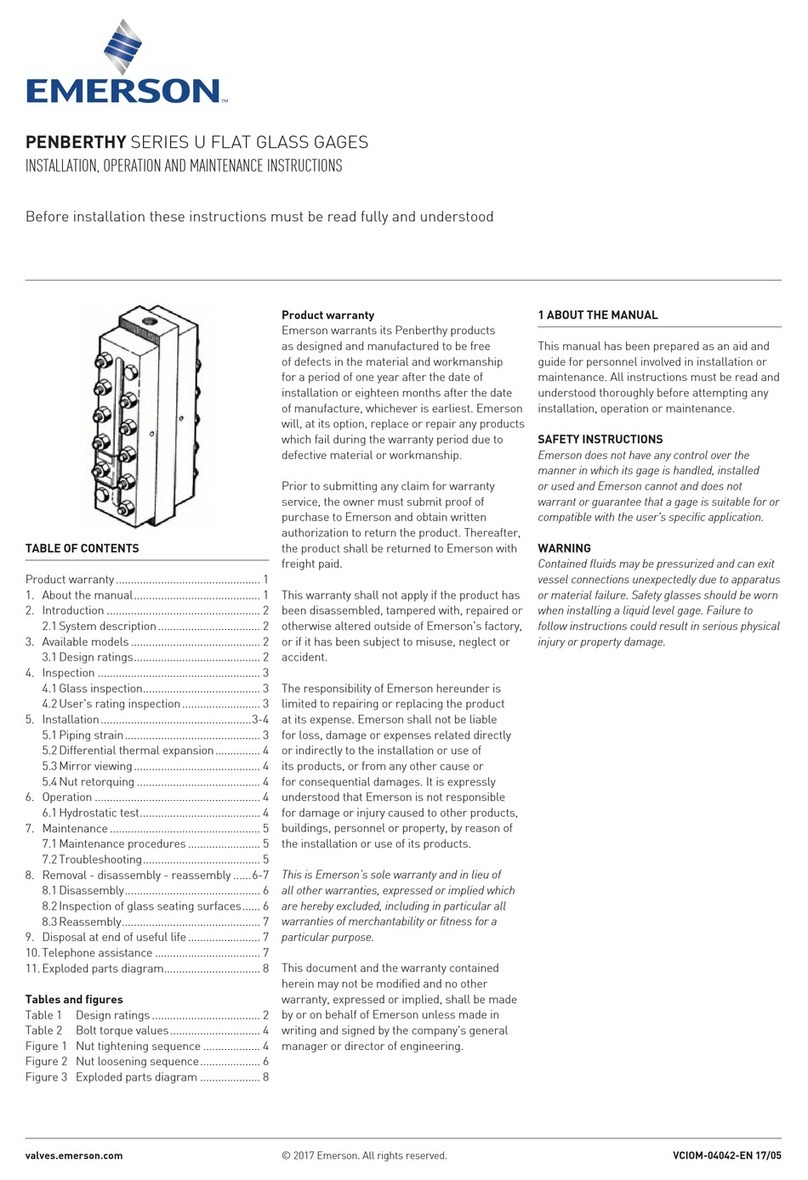
Emerson
Emerson PENBERTHY Series Installation, operation and maintenance instructions

SMC Networks
SMC Networks CJP Series Operation manual

MachineryHouse
MachineryHouse SW4000 instruction manual
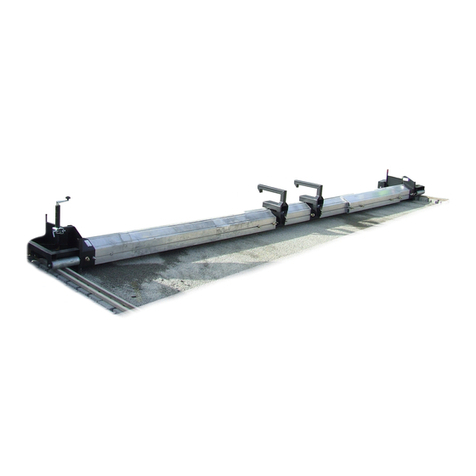
probst
probst TAK Series operating instructions
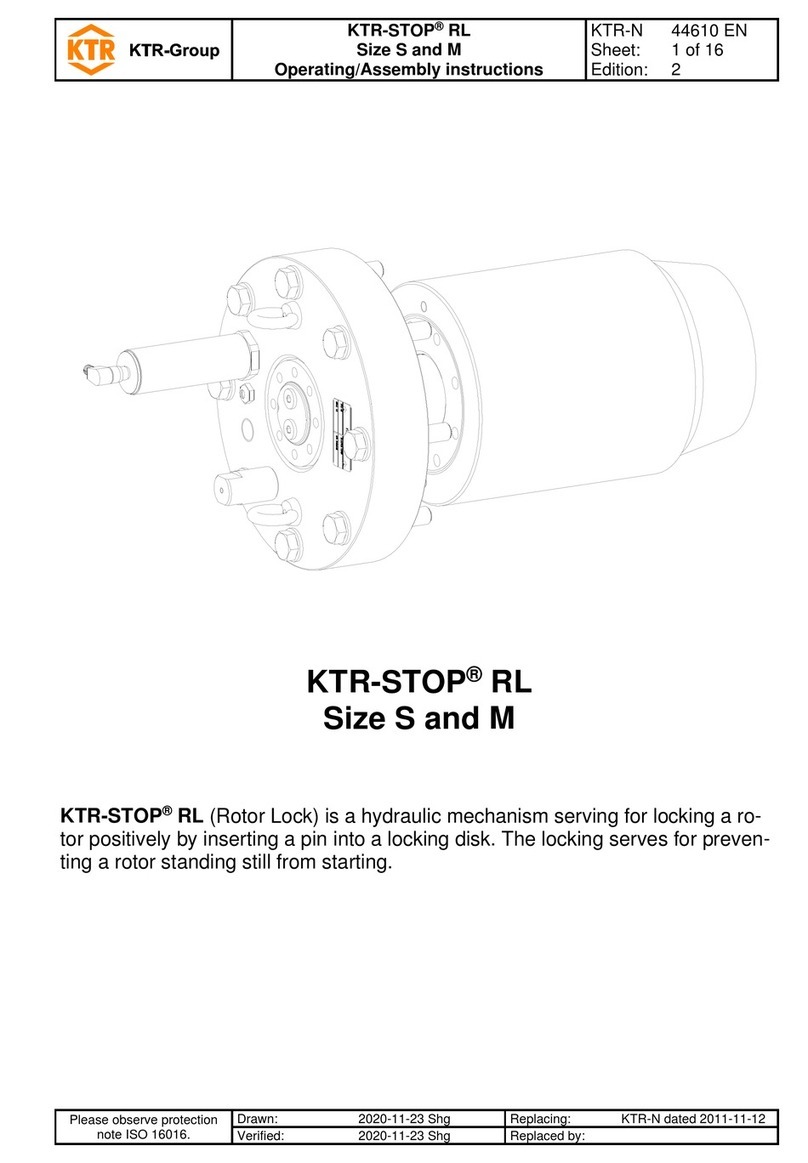
KTR
KTR KTR-STOP RL Operating & assembly instructions
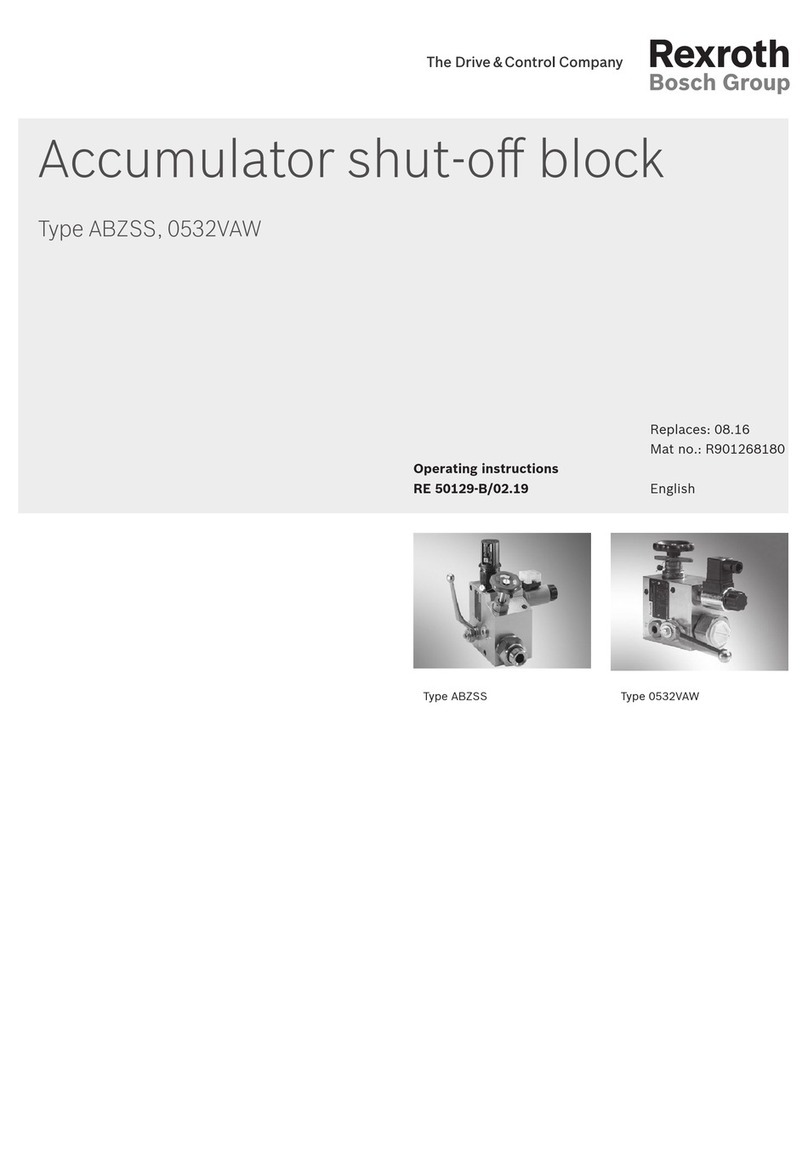
Bosch
Bosch Rexroth ABZSS operating instructions
